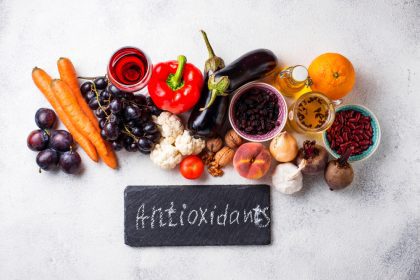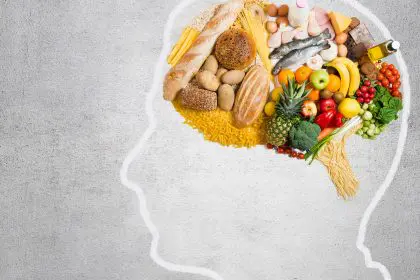New findings suggest a simple dinnertime change could significantly reduce your cancer risk
That innocent salt shaker sitting on your dining table might not be as harmless as it appears. Groundbreaking research involving nearly half a million participants has uncovered a troubling connection between the casual habit of salting meals at the table and your likelihood of developing stomach cancer.
The large-scale study, published in a prominent gastroenterology journal, tracked the health outcomes of 470,000 adults over an 11-year period, identifying 640 cases of gastric cancer among participants. The results revealed a striking pattern: individuals who consistently added salt to their meals faced a 41% higher risk of developing stomach cancer compared to those who rarely or never reached for the salt shaker.
This finding adds to mounting evidence that our everyday eating habits may play a crucial role in cancer prevention, particularly for a disease that often develops silently until reaching advanced stages. Understanding this connection offers a simple but potentially powerful adjustment most people can make to their daily routines without major lifestyle disruptions.
The surprising strength of the salt-cancer connection
The research team examined data from the UK Biobank, a massive biomedical database containing health information from participants across the United Kingdom. By analyzing detailed dietary questionnaires alongside medical records, researchers identified patterns that went beyond what previous smaller studies could detect.
What makes these findings particularly noteworthy is the dose-dependent relationship discovered—as salt-adding frequency increased from “never” to “sometimes” to “usually” to “always,” cancer risk climbed accordingly. This stepwise increase strengthens the case for a genuine connection rather than a statistical coincidence.
Interestingly, when researchers measured 24-hour urinary sodium levels among participants, they did not find the same clear association with cancer risk. This suggests that the specific habit of adding salt to prepared food might be more problematic than the total sodium consumed throughout the day.
This distinction points to the possibility that concentrated salt exposure directly on stomach tissues—rather than sodium distributed throughout the body’s systems—may contribute more significantly to cancer development. The timing and concentration of salt exposure could therefore be as important as the total amount consumed.
How salt potentially transforms stomach cells
The research highlights several biological mechanisms that may explain how regular exposure to high salt concentrations could lead to cancerous changes in stomach tissues.
One primary pathway involves Helicobacter pylori (H. pylori), a common bacterial infection affecting approximately 50% of the global population. While many people carry this bacteria without symptoms, H. pylori combined with high salt exposure creates particularly favorable conditions for cancer development.
Salt appears to enhance H. pylori’s ability to colonize the stomach lining and increase its production of harmful compounds. These compounds can directly damage the DNA of stomach cells, potentially initiating cancer development. Additionally, salt may help the bacteria penetrate the protective mucus layer that normally shields stomach tissues.
Beyond bacterial interactions, salt exposure directly irritates the stomach lining, triggering an inflammatory response. When this inflammation becomes chronic due to regular salt exposure, it creates an environment rich in reactive oxygen species and other compounds that can damage cellular DNA.
This persistent inflammation-damage-repair cycle eventually increases the likelihood of genetic mutations accumulating in stomach cells. As these mutations build up over time, they can disrupt normal cellular controls, allowing for the unrestricted growth characteristic of cancer.
Risk factors beyond the salt shaker
While the research highlights table salt as a significant factor, stomach cancer development typically involves multiple risk elements working in combination. Understanding these additional factors provides a more complete picture of your personal risk profile:
- H. pylori infection remains the single strongest risk factor, with the bacteria present in approximately 90% of non-cardia (main stomach) cancer cases.
- Preserved foods high in nitrates and nitrites, including processed meats, certain pickled vegetables, and traditionally smoked foods, contain compounds that can transform into carcinogenic substances in the stomach.
- Smoking doubles gastric cancer risk through direct damage to stomach cell DNA and by weakening the stomach’s protective mechanisms.
- Family history plays a significant role, with first-degree relatives of stomach cancer patients facing twice the average risk.
- Age and gender influence vulnerability, with risk increasing after age 50 and men developing the disease at approximately twice the rate of women.
The interaction between these factors creates a unique risk profile for each individual. Someone with an H. pylori infection who frequently adds salt to meals and has a family history of stomach cancer faces considerably higher risk than someone with only one of these factors.
Protective strategies for your stomach health
The connection between salt and stomach cancer offers an opportunity for practical risk reduction through simple dietary adjustments:
Retrain your palate gradually. Rather than eliminating salt entirely, try reducing table salt usage incrementally over several weeks. This gradual approach allows taste buds to adjust to lower salt levels without feeling deprived of flavor.
Explore alternative seasonings. Fresh herbs, citrus, vinegars, and salt-free spice blends can enhance flavor without sodium. These alternatives often provide additional health benefits through antioxidants and other beneficial compounds.
Consider potassium-based salt substitutes. Products containing potassium chloride provide a similar taste while potentially offering cardiovascular benefits. However, those with kidney issues or taking certain medications should consult healthcare providers before using these products.
Read labels vigilantly. While table salt gets attention, processed foods contribute approximately 70% of sodium in the average American diet. Focus particular attention on bread, pizza, sandwiches, cold cuts, soups, and cheese—the top sources of hidden sodium.
Increase fresh fruit and vegetable consumption. Plant-based diets naturally lower cancer risk through multiple mechanisms, including fiber content that may help remove carcinogens from the digestive tract.
Addressing the H. pylori connection
Given the synergistic relationship between salt and H. pylori in cancer development, managing this common bacterial infection becomes particularly important for comprehensive prevention.
The bacteria can be detected through several non-invasive tests, including breath tests, blood antibody tests, and stool antigen tests. For those with risk factors or persistent upper digestive symptoms, testing may be warranted even without severe symptoms.
If H. pylori infection is present, eradication therapy typically involves a combination of antibiotics and acid-suppressing medications. Successful treatment significantly reduces—though doesn’t completely eliminate—future cancer risk, especially when combined with dietary improvements including salt reduction.
After treatment, dietary choices become even more important in preventing reinfection and reducing the impact of any remaining bacteria. A diet rich in fruits, vegetables, whole grains, and probiotics supports a healthy gut microbiome that can help keep H. pylori in check.
Putting cancer risk in perspective
While the 41% increased risk associated with frequent salt use sounds alarming, understanding absolute risk provides important context. Stomach cancer remains relatively uncommon in the United States, with approximately 26,500 cases diagnosed annually.
For perspective, the average American has about a 1% lifetime risk of developing stomach cancer. A 41% increase would raise this to approximately 1.4%—still relatively low compared to more common cancers. However, for those with additional risk factors such as H. pylori infection or family history, the absolute risk becomes more significant.
For these higher-risk individuals, dietary modifications including salt reduction represent particularly valuable preventive measures. The beauty of these adjustments lies in their simplicity and the absence of negative side effects—reducing salt intake benefits cardiovascular health even if the cancer prevention effect were smaller than studies suggest.
The research reinforces a broader truth about cancer prevention: small, consistent dietary choices accumulate over decades to significantly impact cancer risk. While no single meal determines health outcomes, the patterns established across thousands of meals create the conditions that either promote or discourage cancer development.
By making mindful choices about salt consumption and overall diet, individuals can actively participate in their cancer prevention strategy—putting the salt shaker down today may lead to significantly better health outcomes in the future.














